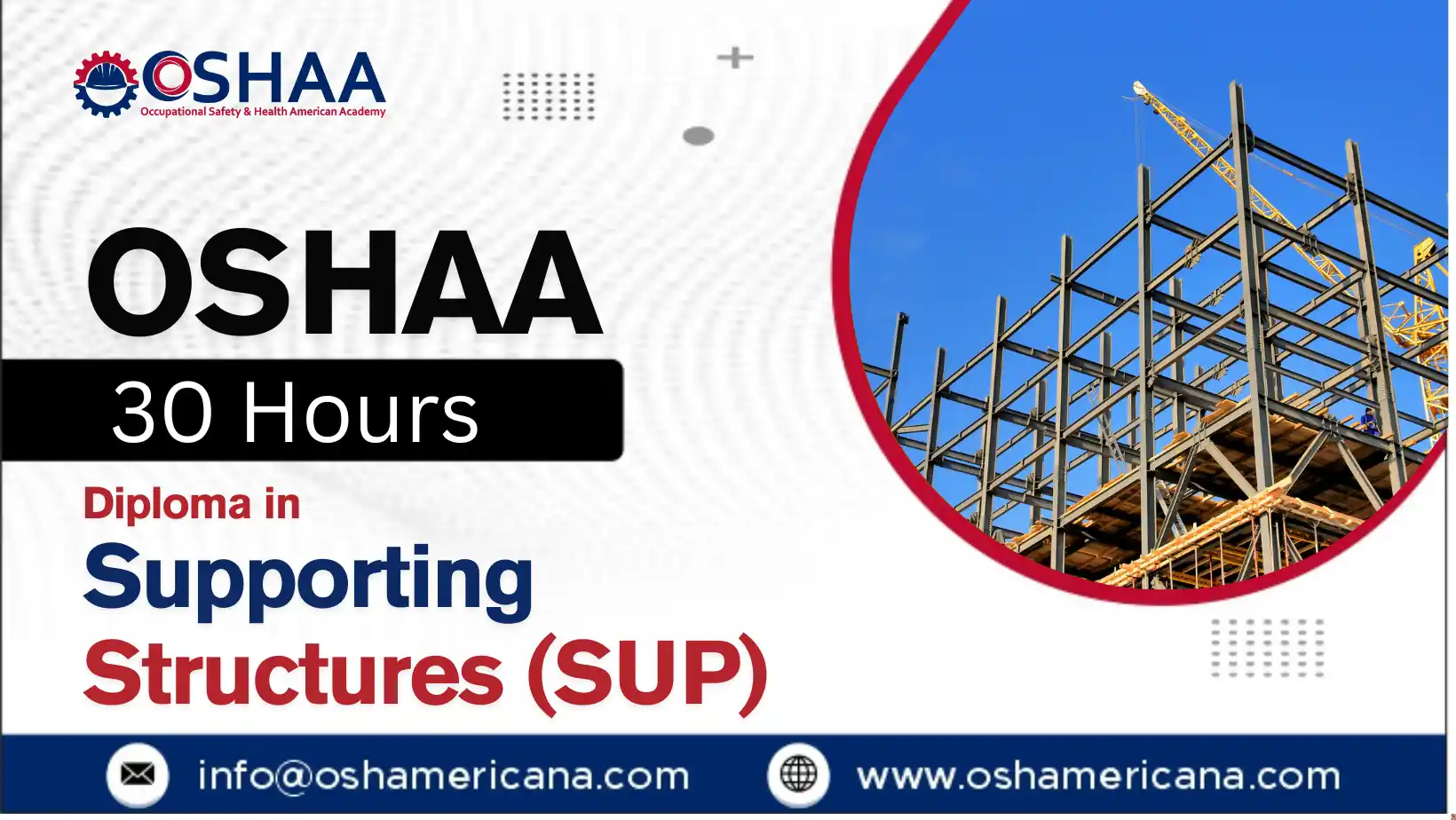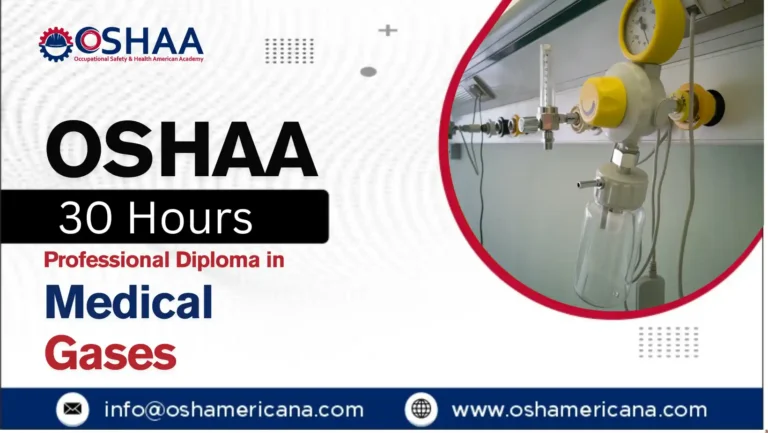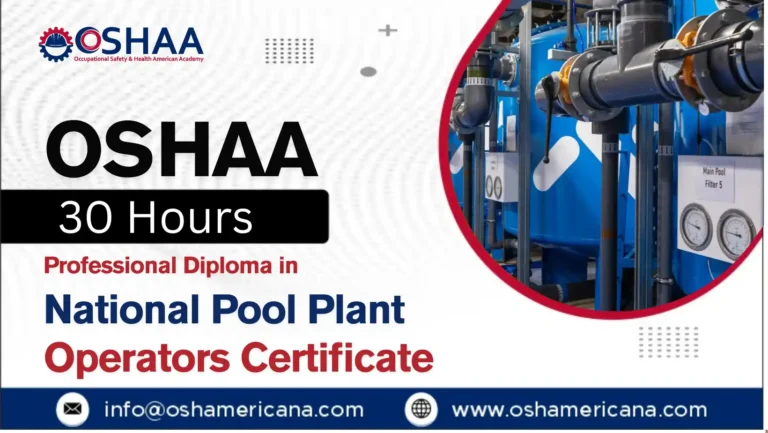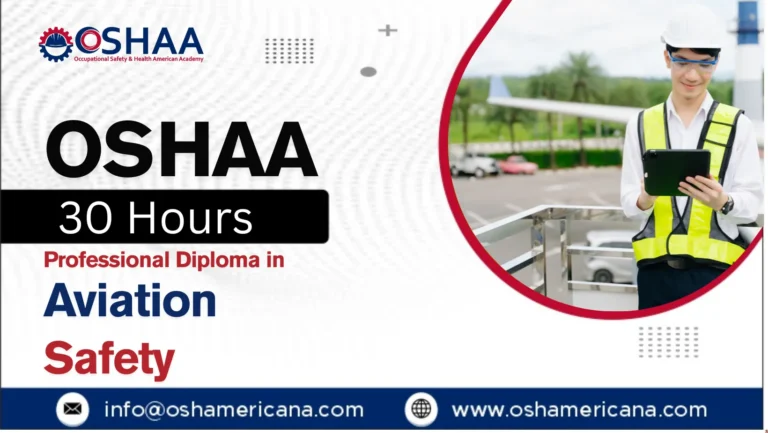The OSHAA 30-Hours Diploma in Supporting Structures (SUP) is a comprehensive and professionally designed safety training program that focuses on the essential knowledge and practical skills required to safely work with or around temporary and permanent supporting structures. Whether you’re involved in construction, scaffolding, rigging, or industrial installations, this diploma helps ensure that you meet international safety standards and best practices for structural support systems.
This OSHA-based program emphasizes workplace safety regulations, structural stability, load-bearing calculations, and compliance procedures. The curriculum covers vital topics including scaffold design and erection, formwork systems, shoring and bracing, and structural hazard identification. It also incorporates risk assessment methods, inspection techniques, and emergency response planning—making it ideal for workers, supervisors, engineers, and HSE professionals involved in any type of structural support activity.
The course not only enhances your understanding of structural systems used in heavy industries but also provides hands-on awareness of their correct installation, safe usage, and maintenance. As construction projects grow more complex, the need for properly trained personnel who understand the importance of structural integrity becomes increasingly critical. By completing the OSHAA 30-Hours Diploma in Supporting Structures, learners will be equipped to prevent incidents, ensure compliance, and promote a culture of safety on job sites.
Whether you’re aiming to upgrade your professional skills or meet employer requirements, this diploma delivers both theoretical knowledge and practical competence in line with global occupational health and safety standards.
OSHAA 30-Hours Diploma in Supporting Structures (SUP)
Study Units
Learning Outcomes
- Introduction to OSHAA and Structural Safety Standards (2 Hours)
- Understand the purpose and scope of OSHAA in relation to structural safety.
- Recognize key international and national safety standards for supporting structures.
- Identify the responsibilities of workers and supervisors under OSHAA guidelines.
- Types and Functions of Supporting Structures (3 Hours)
- Classify different types of supporting structures used in construction.
- Explain the functions of each type in load distribution and structural integrity.
- Assess when and where to apply specific structural systems.
- Scaffolding Systems: Design, Erection, and Dismantling (4 Hours)
- Understand the components and configurations of scaffolding systems.
- Demonstrate safe procedures for scaffolding erection and dismantling.
- Evaluate scaffolding design according to job-specific requirements.
- Formwork Systems and Their Safe Use (3 Hours)
- Describe the function and types of formwork in concrete construction.
- Apply safe handling, installation, and removal techniques.
- Understand material compatibility and formwork stability during pouring.
- Shoring and Bracing Techniques in Construction (3 Hours)
- Identify various shoring and bracing methods used in temporary support.
- Analyze structural needs for choosing appropriate techniques.
- Implement safety protocols when installing or removing support systems.
- Load-Bearing Calculations and Structural Stability (6 Hours)
- Perform basic load-bearing calculations for structural support.
- Evaluate the impact of live and dead loads on structural systems.
- Ensure compliance with engineering safety margins and design codes.
- Inspection and Maintenance of Supporting Structures (3 Hours)
- Conduct routine inspections for wear, damage, or misalignment.
- Create maintenance schedules and checklists to prolong structure life.
- Report and address issues before they pose safety hazards.
- Hazard Identification and Risk Assessment in Structural Work (3 Hours)
- Recognize potential hazards in scaffolding, formwork, and shoring operations.
- Perform risk assessments and implement mitigation strategies.
- Understand the use of personal protective equipment and safety signage.
- Emergency Procedures and Structural Failure Response (3 Hours)
- Develop response plans for partial or total structural failures.
- Communicate effectively during emergencies using pre-defined protocols.
- Implement evacuation, rescue, and incident reporting procedures.
Here are the course benefits for the OSHAA 30-Hours Diploma in Supporting Structures (SUP):
- Comprehensive Knowledge of Supporting Structures
Gain in-depth understanding of scaffolding, formwork, shoring, and bracing systems used in construction and industrial environments. - Improved Job Site Safety
Learn to identify structural hazards early and implement proper safety measures, reducing the risk of collapse or injury on site. - Hands-On Technical Skills
Master safe erection, inspection, and dismantling techniques for various support systems through practical training aligned with OSHAA standards. - Career Advancement Opportunities
Strengthen your qualifications for supervisory, safety officer, or site management roles in construction, oil & gas, or infrastructure projects. - Compliance with International Standards
Understand and apply OSHAA structural safety regulations, helping your organization meet global safety compliance and avoid legal penalties. - Enhanced Risk Management Abilities
Build the ability to perform structural risk assessments and create safer, more efficient work plans under pressure. - Emergency Preparedness
Be equipped to respond effectively to structural failures or safety incidents, protecting workers and minimizing operational downtime. - Certification for Better Employment Prospects
Receive a 30-hour OSHAA-recognized diploma that boosts your credibility and employability both locally and internationally. - Applicable Across Multiple Industries
Apply your learning in diverse sectors like construction, mining, shipbuilding, warehousing, and heavy manufacturing. - Structured Learning from Industry Experts
Learn from certified professionals with real-world experience in structural engineering and workplace safety.
This course is designed for individuals and professionals who are directly or indirectly involved in the design, construction, inspection, or safety management of supporting structures at industrial or construction sites. It is especially suitable for:
- Construction Workers and Site Engineers
Individuals working on scaffolding, formwork, shoring, and bracing tasks who need to improve their technical skills and safety knowledge. - Health & Safety Officers
Professionals responsible for implementing and monitoring structural safety protocols in compliance with OSHAA regulations. - Supervisors and Site Managers
Those overseeing construction or infrastructure projects who need to ensure structural integrity and worker safety on-site. - Civil Engineers and Structural Designers
Engineers involved in designing supporting systems who must understand practical safety applications and hazard control. - Maintenance and Inspection Personnel
Staff responsible for regular inspection and upkeep of temporary or permanent support systems across different industries. - Oil, Gas, and Industrial Workers
Individuals working in environments where supporting structures are critical for operational safety and performance. - Students and Fresh Graduates
Those seeking a career in construction or industrial safety looking to add a globally recognized diploma to their resume. - Government and Regulatory Agency Personnel
Officials involved in compliance checks and audits for workplace safety and structural standards.
This course is ideal for anyone aiming to enhance their qualifications, ensure safer work environments, and advance in their professional journey within the construction or industrial safety sector.







